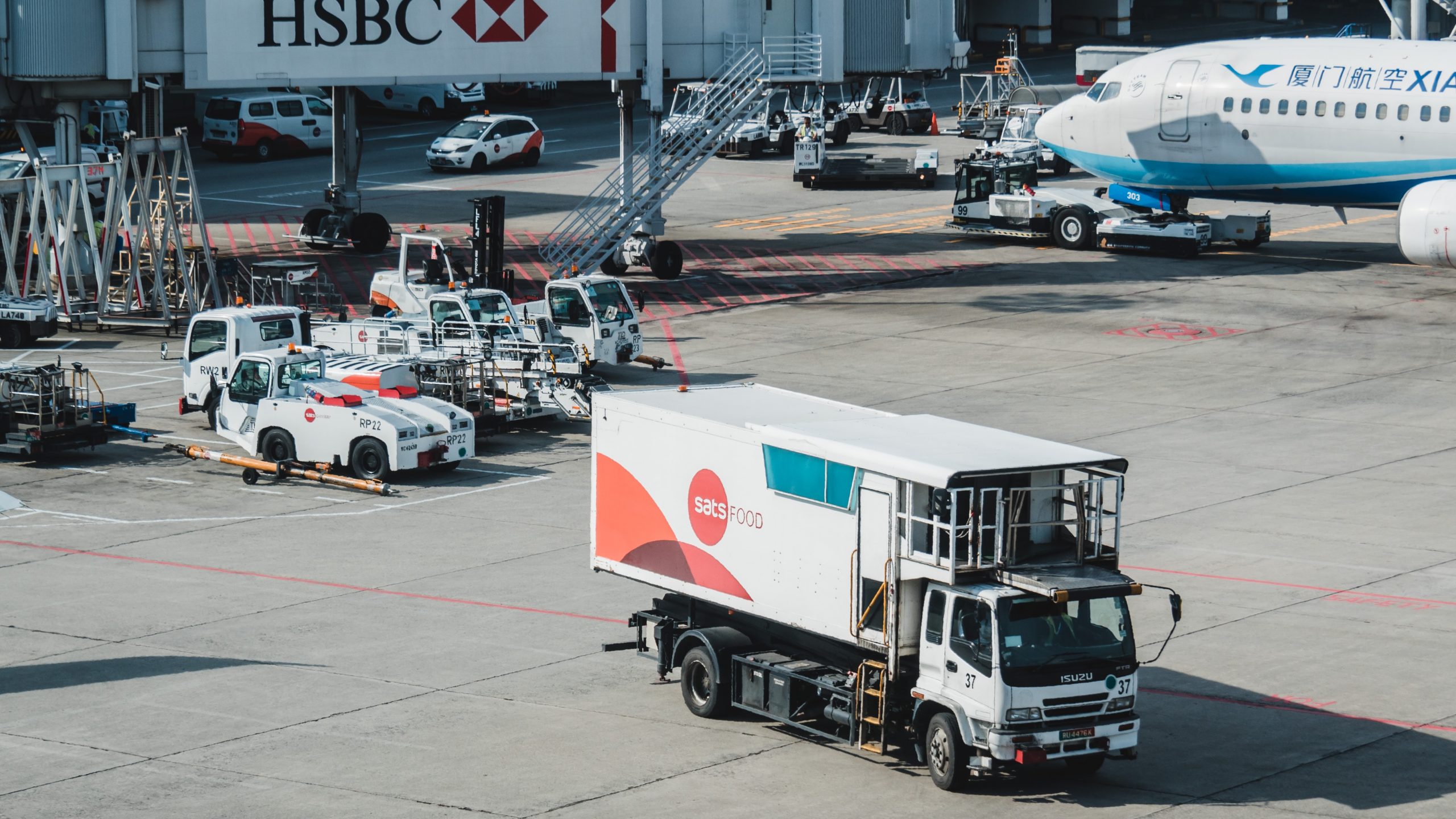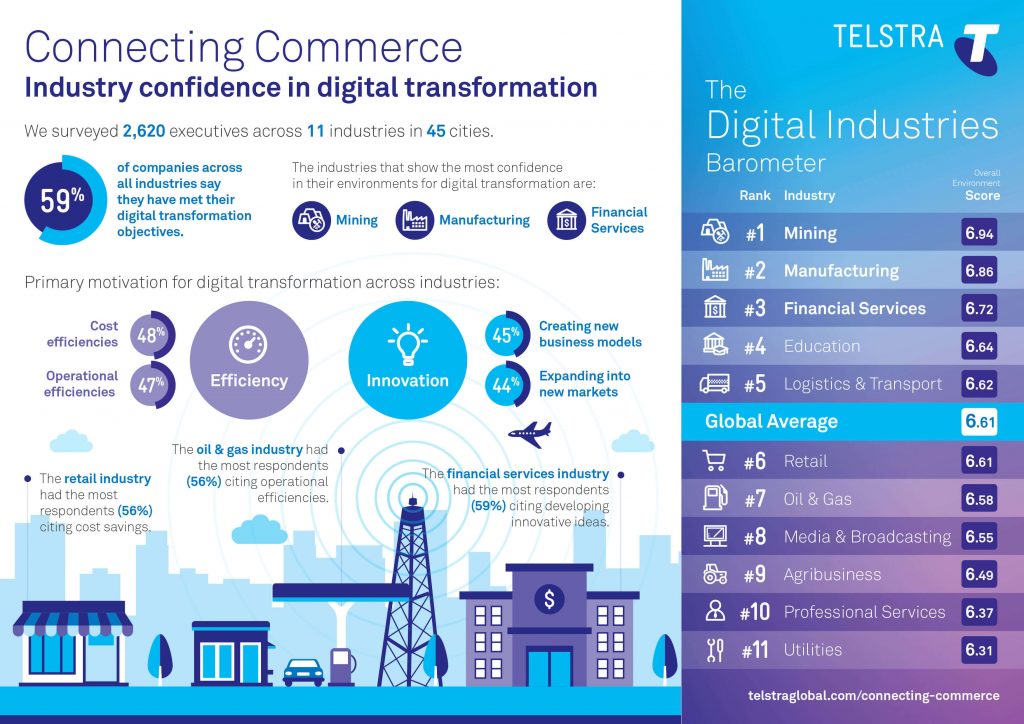Digital Transformation for Logistics- What, Why and How

Internet and Technology have seen significant acceptance during the last two decades. Emailing, internet shopping, online ticket booking, music and movie downloads, and other such activities have become the norm. To put it another way, our lives have been digitally altered. With everything happening online, one may have predicted the demise of the logistics industry. However, the logistics business has gradually caught up with the trend. More than 85 million products & documents are delivered on any given day [1], demonstrating the logistics industry’s digital transformation.
WHAT IS THE MEANING OF DIGITAL TRANSFORMATION?
A digital transformation occurs when an industry adopts digitalization in all aspects of business. The manner in which firms communicate with their clients and undertake operations and deliveries undergoes a radical transformation. As a result, the industry’s operation is drastically altered.
With the rising digitalization of various businesses, Speed & Time: the essential factors leading to increased efficiency have become even more important for the logistics industry. The introduction of technology has resulted in a logistical transformation with faster, leaner, and more efficient operations. With the advent of automation services, these changes are being adopted at a faster rate than ever before.
WHY MUST LOGISTICS INDUSTRIES UNDERGO DIGITAL TRANSFORMATION?
Global spending on digital transformation in the logistics business is estimated to reach $84.6 billion by 2027 [2]. It is critical to the business strategy of multinational organisations with global supply chain operations.
As per the survey conducted by Telstra Global & The Economist Intelligence Unit [3], to understand the acceptance of digital transformation in various industries. They surveyed 2,620 business executives from 11 industries in 45 cities around the world resulting in creating first-ever Digital Industries Barometer, by measuring business confidence in the strength of the local environment for digital transformation across five areas: innovation and entrepreneurship, financial environment, people and skills, development of new technologies, and ICT infrastructure. Outcome of the survey is listed below:
- Mining, Manufacturing and Financial Services are the industries that show the most confidence in digital transformation.
- Primary motivation for digital transformation across industries are:
- Cost Efficiency: 48%, retail industry had the most respondents citing cost savings.
- Operational Efficiency: 47%, oil & gas industry has the most respondents citing operational efficiencies.
- Creating New Business Model: 45%, financial services industry has the most respondents citing developing new ideas.
- Expanding into New Markets: 44%
- As per the digital industries barometer, Logistics & Transport ranks 5th among 11 industries globally with 6.61 of digital transformation acceptance score.

The transportation and logistics sector are strongly interlinked with other economic sectors. Moreover, the enhanced efficiency of logistics services adds to overall economic growth. This fact is applying to both separate countries and the global economy.
The adoption of digital transformation in logistics was quite sluggish [4] until recently. In recent years, however, the industry has seen the emergence of new competitors who works more closely with technology companies. This relates to a market worth hundreds of billions of dollars, and many players would like to significantly expand their market presence.
To increase end-to-end visibility, back-office operations and logistics processes are becoming digital. Technologies like Big Data, Artificial Intelligence, Machine Learning, Natural Language Processing, Blockchain, and Cloud Computing are propelling current digital transformation, displacing outdated technology such as AS400 green screens. These improved technologies have increased supply chain productivity, reduced costs and errors, and benefited all sectors of the logistics industry, including trucking transportation, international transportation (ocean and air), supply chain management, and shipment tracking.
The logistical competitive advantage is gained from speed and time. As a result of the technological revolution, both B2B and B2C clients have less patience, and everyone wants their goods and deliveries on time. Wonder why? because of real-time economy, which was spawned by a hyper-connected business world, also in transportation and logistics (as well as supply chains). Research shows, 76.9% of executives agree or highly agree that the evolution toward a real-time economy has an impact on their business processes [5]. This shouldn’t be all that surprising, if the same research were conducted today (it was conducted at the end of 2013), the results would be considerably higher.
HOW DIGITAL TRANSFORMATION IS CHANGING THE LOGISTICS INDUSTRY:
Despite the global epidemic and erratic consumer behaviour, it’s difficult for industries to cope-up with modern problems and limit their ability to remain innovative. According to FEMA 2020 study, after a disaster 40% of small businesses never reopen, and 20% of those that do collapse within a year [6]. Thus, there was a need felt for digital transformation which will empower organisations to become more robust in the event of black swan. The digital transformation benefits by offering:
- IoT-Integrated Supply Chain: Internet-connected physical devices are referred to as the Internet of Things (IoT). They can strengthen fleet management and last-mile delivery, expedite demand assessment and predictive maintenance, boost transparency and visibility, and enhance real-time inventory/fleet tracking and management.
- Behaviour Analytics & Customer-Centricity: Utilizing customer dynamics, path analysis, cohort analysis, and data mining, businesses may track user behaviour across platforms, providing visibility into the whole first-mile to last-mile journey.
Digital transformation isn’t just one big thing. Often, companies only think about organisational change and don’t realise that there are also four types of digital change in the process. Because of this, they can’t take full advantage of everything digital transformation has to offer.
- Business process transformation: Blockchain, Internet of Things (IoT), Artificial Intelligence (AI) & Machine Learning, Supply Chain Digital Twins, Deep data, and other technologies offer valuable new ways to streamline or rethink common tasks, leveraged by supply chain and logistics companies to reinvent their business processes. This change helps logistics firms in accelerating innovation, making better decisions, engaging customers throughout their journey, incorporating organisational flexibility, and increasing automation.
- Digital twin: a virtual representation of hundreds of logistics positions, assets, stocks, and warehouses, employs advanced analytics and AI to stimulate the operation of a supply chain, including all of the complexity that contributes to vulnerabilities and hazards.
- Blockchain: enables the integration of diverse business streams, such as logistic providers, shipping lines, and carriers, onto a single platform. Utilizing IoT, supply chains may perform mechanical and technological maintenance, inventory control, fleet tracking, and enhance logistics operations.
- AI & ML: aid in addressing governance issues and long-standing data silos in supply chains, enabling more visibility and integration across the varied and remote network of stakeholders. Integration of digital logistics platform provides interconnected systems that enable logistic service providers to conduct effective operations and give a smooth client experience.
- Big Data and analytics: by gaining insights into how demand will evolve, analyzing big data may help predict adjustments and manage inventory shortages more effectively. This will also help the industry better manage its workforce by preventing overtime, rush periods, and exhaustion, thereby reducing unnecessary overhead costs and increasing the competitiveness of logistics companies.
- Business model transformation: A business model transformation isn’t just about improving one part of an organization’s operations. Instead, it’s about improving how the business creates and delivers value. As part of this change, the way services and solutions are delivered could switch from physical interactions to a completely digital experience. Thus, overhauling the traditional business models.
- Cross domain transformation: simply put, a cross-domain transformation includes leveraging an organization’s existing expertise and investments to expand its reach into whole new business areas. Amazon initially was in the business of selling books online, to do this efficiently, they spend extensively in digital capabilities to support its core retail business, thus realising the potential to provide cloud computing solutions. This type of transition enables non-traditional competitors to enter wholly new industries, thus creating lucrative business prospects in entirely new verticals.
- Organisational transformation: it focuses on fostering enterprise-wide changes via long-term digital transformation. By redefining internal procedures and capacities as well as the operational mindset, these improvements facilitate future expansion. A change in an organisation results in agile workflows that eliminate solution silos and replace them with real-time testing and decentralised decision-making procedures. These effects enable new techniques of collaboration and invention, which can lead to novel approaches to value delivery.
LEADING COMPANIES INCORPORATING DIGITAL TRANSFORMATION IN THE LOGISTICS INDUSTRY
Rapid technological innovation has fundamentally altered the competitive dynamics of the logistics service industry and compelled incumbent logistics service providers (LSPs) to digitalize. Leaders in the logistics service industry like DHL Supply Chain, FedEx, UPS, Samsara, etc., have already taken steps toward developing, implementing, and diffusing different technologies, which have helped companies become more digitally mature.
Digital transformation helps logistics companies track the delivery of goods in real-time, enabling them to identify areas for improvement and increase productivity. In addition, it allows them to optimise travel routes, account for anticipated delays, and flag deliveries in the event of an accident or vehicle loss. It can be enabled with features like preventive maintenance, route/fuel optimization, fleet tracking, and geofencing that can dramatically cut costs and time while increasing utilisation rates. Analytical reports, analyzing metrics, and measuring KPIs can help maximise revenues and productivity and enhance process effectiveness. LSPs providing fleet management software will be considered good if they employ analytics metrics, fleet security, maintenance reports, and driver details to monitor the fleet and ensuring their longevity and safe driving.
The digitally advanced players like, Axestrack – headquartered in Jaipur, created one of the industry’s most trusted ‘Digital Enterprise Logistics Platform’ by taking a ground zero approach to transforming the Indian Transportation Industry. Much more than a fleet management software, their Unified Digital Logistics Platform has the ability to create an Enterprise Digital Thread which carries digital data across different stakeholders and systems in an enterprise in a seamless manner. It establishes a digital connection between three key components of the Supply Chain: Man, Machine and Material thus enabling the customer to create, transform, and manage every piece of information about their logistics business, “digitally”. In layman’s terms, once the customer enters the system, he would not have to leave it to perform any manual tasks.
In the last five years, leading companies have seen the “Digital Enterprise Logistics Platform” from Axestrack as the most important part of their digital business strategies (DBS). These strategies translate into several projects and initiatives. The most common ones are: AI control tower improving safety and delivery compliance levels to 99% using multi-mode tracking; standardization of operational systems; eliminating paper documents from logistics management processes; introducing AI powered track and trace capabilities which provide an ability to estimate time of arrival (ETA); digitizing contacts with customers and partners through platforms; utilizing predictive analytics to optimize the usage of their systems’ capacity; automation of simple transport, warehousing and value-added logistics processes; and digitizing back-office operations.
FOR DIGITAL TRANSFORMATION, THE RIGHT PATH IS AHEAD
The digitalisation of all industries is a trend that is increasingly entering all main economic sectors, though at varying rates, as is also evident by the survey conducted by Telstra Global & The Economist Intelligence Unit [3]. Modern digital technologies are the tools that enable this procedure. Therefore, the significance of digital technology in the logistics industry is evident to all.
There are businesses that are currently avoiding the active application of digital technologies; perhaps they should reconsider their stances in order to reap the numerous benefits of digitalization. There is still potential for improvement so that digital transformation may become simpler and the significance of technology in the sector may become more apparent. As a result of increased competition, the price and quality of products have levelled off, and delivery speed is now the deciding factor for end users.
Footnotes: –
- https://reports.weforum.org/digital-transformation/the-digital-transformation-of-logistics-threat-and-opportunity/
- https://quixy.com/blog/top-digital-transformation-statistics-trends-forecasts
- https://telstraglobal.com/connecting-commerce
- As per the report titled, “Digital Disruption in Transportation & Logistics is Overdue” by BCG Analysis, Pitchbook Data 2016
- https://www.acquia.com/sites/acquia.com/files/documents/2020-01/Transportation-eBook.pdf
- https://www.govtech.com/em/preparedness/small-businesses-are-a-vital-part-of-community-resiliency-but-often-overlook-vulnerabilities.html
Authors:
Team Axestrack
Published in Telematics Wire




